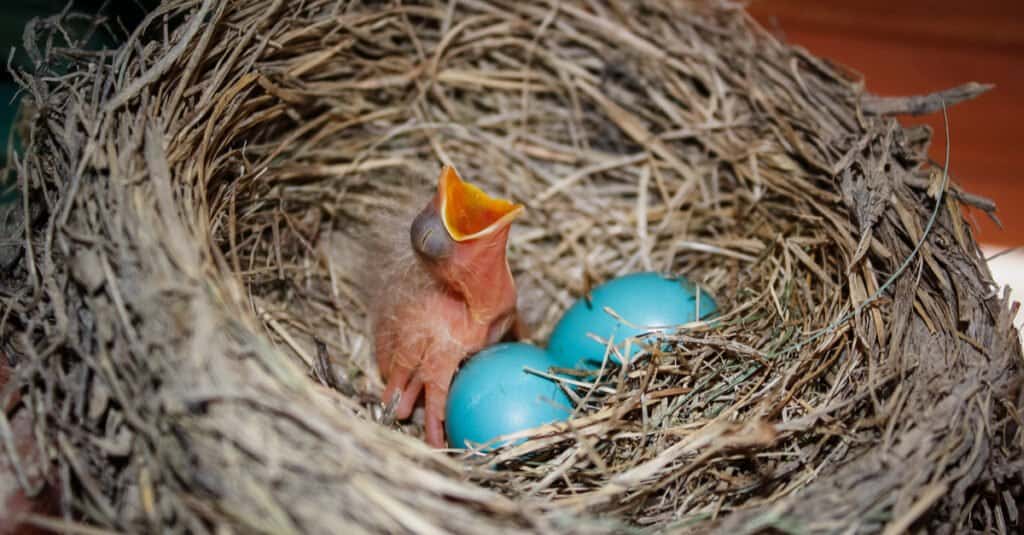
Robins are excellent mothers who are targeted by brooding parasite birds.
©Melinda Amburgy/Shutterstock.com
Many bird species lovingly care for their eggs and go to great lengths to protect them. Females may sit on a nest for weeks, while males work to protect the eggs and search for food. That said, several notorious bird species take a different approach. Instead of brooding their own eggs, these birds rely on other birds to hatch and raise their young. Here is a list of 5 birds that lay eggs in other birds’ nests.
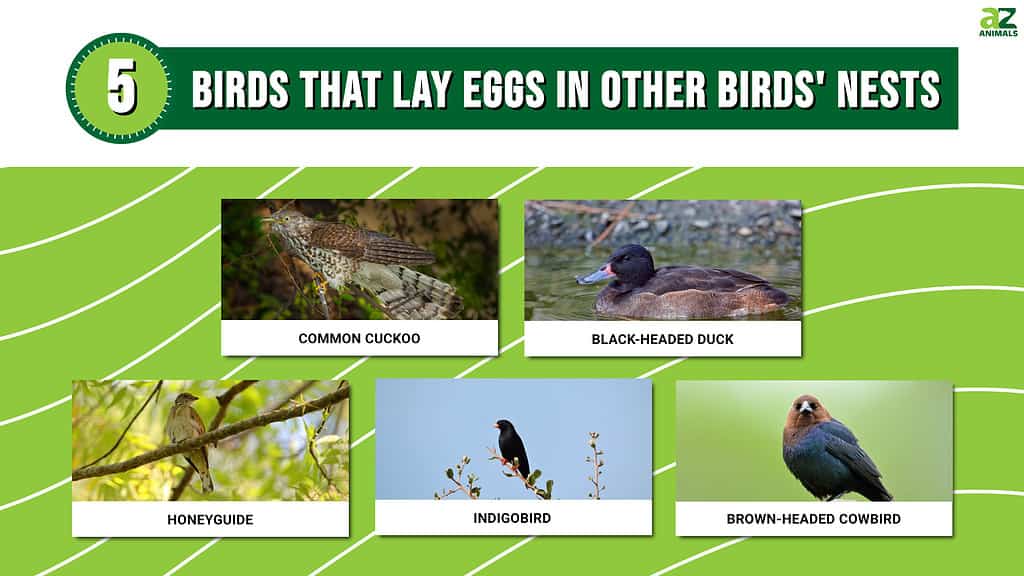
Known as brood parasites, these birds that lay eggs in other birds’ nests employ a number of underhanded tactics. Some will rely on deception to trick other birds into raising their young. Meanwhile, like Old World mafioso, some birds bully other species into taking care of their eggs. In fact, some will go so far as to intimidate other birds and may destroy the host bird’s eggs. While rare, such behavior is well documented and is worth further exploration.
Read on for more detail about the five birds that lay their eggs in other birds’ nests that we have chosen to highlight:
#5: Brown-headed Cowbird
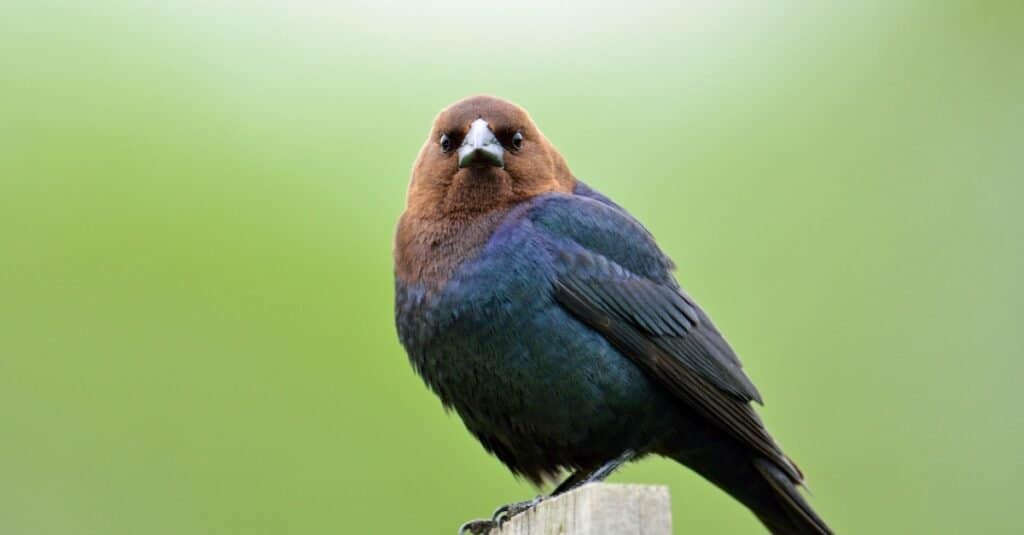
The brown-headed cowbird targets the nests of up to 220 host species.
©iStock.com/BrianEKushner
The brown-headed cowbird (Molothrus ater) is a small brood parasitic bird native to North America. It’s a member of the Icterid family of New World blackbirds and belongs to the genus Molothrus. While the genus includes five other species, the brown-headed cowbird is the type species for the genus. In ancient Greek, the genus name translated to “battle to impregnate,” which is certainly fitting. Brown-headed cowbirds lay their eggs in the nests of other small birds such as American robins, hummingbirds, and some raptors. While most brood parasites target one or a few species, brown-headed cowbirds take a more general approach. According to field research, they target the nests of up to 220 host species. This makes them one of the most prolific parasitic species known worldwide.
When the host bird is away from its nest, the female brown-headed cowbird will sneak in to lay her eggs. If the host bird rejects the cowbird eggs, the brown-headed cowbird female may destroy the host’s eggs in retaliation. Those hosts that do not notice the cowbird’s egg will unwittingly hatch and feed the cowbird’s offspring. Because cowbird offspring incubate quickly, they often hatch before the host’s eggs. They also grow quite quickly, which gives them an advantage over the host’s eggs in securing food. This can often lead to the host’s hatchlings dying of starvation. However, some species such as the brown thrasher, grey catbird, and American yellow warbler almost always reject the eggs or expel the cowbird hatchlings. The brown-headed cowbird hatchlings that do survive grow to recognize the calls of other cowbirds. This allows them to return to cowbird flocks once they can leave the host’s nest.
#4: Indigobird

The indigobird targets fire finches because their eggs look very similar.
©iStock.com/Alfie Curling
A native to Africa, the indigobird belongs to the Viduidae family of songbirds. In addition to the indigobirds, the Viduidae family includes fellow brood parasites the whydah and cuckoo-finch. Indigobirds generally appear finchlike, and most sport black or indigo coloring in their plumage. To distinguish an indigobird from a whydah, simply look at their tails. While male whydahs grow long tail feathers, male indigobirds do not. indigobirds lay their eggs in the nests of Old World finches. In particular, indigobirds tend to target estrildid finches as hosts. In general, indigobirds use fire finches as hosts, while whydahs prefer to target pytillas.
Unlike some parasitic birds, indigobirds and whydahs do not make a habitat of destroying their host’s eggs. Instead, females simply mix their eggs in with their hosts. Usually, females lay 2-4 eggs at a time. Since the eggs of indigobirds, whydahs, and estrildid finches are all white, the host birds can rarely differentiate whose eggs belong to who. In reality, indigobird and whydah eggs measure slightly large, but the difference is only slight. Hatchlings learn to imitate and recognize the vocalizations of the host species. As adults, male hatchlings use this information to vocalize their interest in potential female mates and therefore continue the cycle of mating and parasitism.
#3: Honeyguide

Honeyguide hatchlings kill the host bird’s young using their sharp, hooked beaks.
©iStock.com/neil bowman
Honeyguides range throughout southern Africa, the foothills of the Himalayas, and Malaysia. Also known as indicator birds or honey birds, honeyguides get their name from unusual behavior. These tiny, dull-colored birds purposefully lead humans to beehives so they can get to their favorite foods – beeswax, and grubs. So far, of the 17 species of honeyguide, only the greater honeyguide is known to exhibit this behavior. On the other hand, evidence suggests that half of all honeyguides are brood parasites. They specifically target birds like white-eyes, warblers, swallows, bee-eaters, barbets, and starlings.
In these 8 species, the female honeyguide lays a single egg in multiple nests. By doing so, she spreads out the risk to multiple hosts and ensures more of her eggs survive. At times, female honeyguides may kill the host’s eggs prior to laying their own egg. Regardless, females take the time to incubate their eggs prior to laying them in the host’s nest. They do this so that their offspring will hatch before the host’s eggs. The bigger honeyguide chick will then either destroy the host’s eggs or kill the host’s hatchlings after they’re born. It accomplishes this task using a sharp hook on its beak to stab the host’s young.
#2: Black-headed Duck
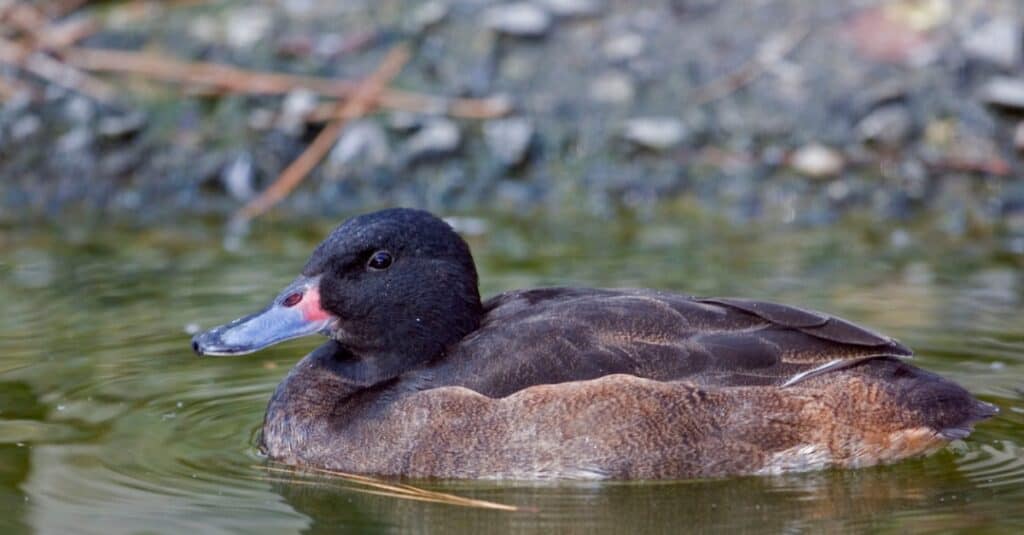
Black-headed duck hatchlings do not harm the host’s young and leave the nest soon after hatching.
©iStock.com/hstiver
The black-headed duck hails from the swamps and lakes of Chile, Paraguay, Uruguay, Argentina, and Brazil. It belongs to the Anatidae family, but so far ranks as the only member of its genus, Heteronetta. Unlike the closely related stiff-tailed duck, black-headed ducks sport a soft tail and flat bill. The species gets its name from the male, which grows black feathers on its head and mantle. While relatively small and plain-looking, black-headed duck females possess plenty of guts. Rather than building a nest, they will instead lay their eggs in the nests of other birds. They target pochards, coots, and ducks, although they will also occasionally use the nests of gulls and some raptors.
Unlike some brood parasites, black-headed duck females do not use aggressive tactics against their hosts. Instead, they simply allow their eggs to peacefully incubate with the host’s eggs. Furthermore, black-headed duck offspring do not prey upon the host’s hatchlings. By the time they hatch, black-headed duck young can mostly fend for themselves. Since they leave the host’s nest soon after hatching, there is no need to kill the host’s offspring to increase their chances of survival.
#1: Common Cuckoo
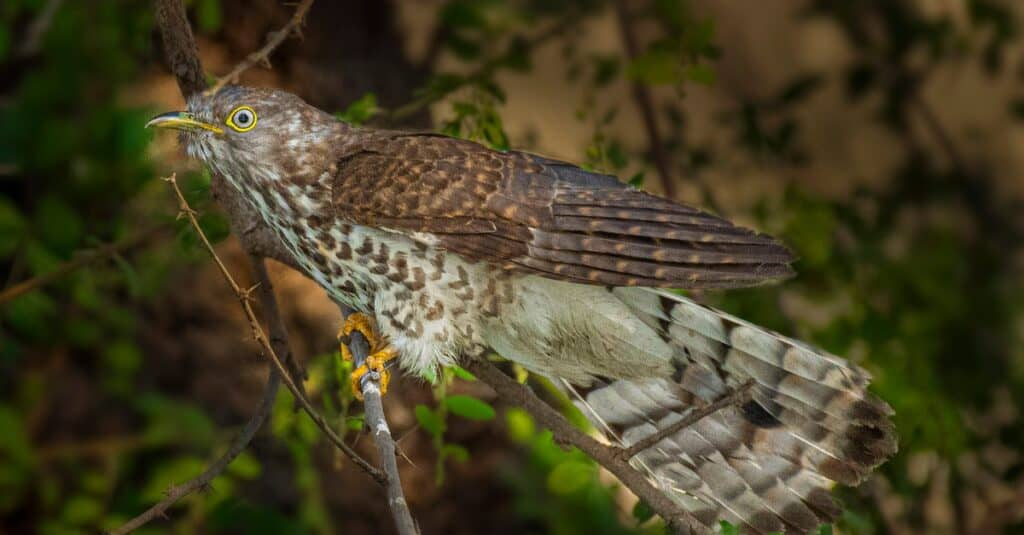
Common cuckoo chicks will push the host’s eggs or young out of the nest so they don’t have to share food.
©iStock.com/Rajukhan Pathan
The common cuckoo is easily one of the most well-known and studied brood parasitic bird species. It belongs to the cuckoo family, which includes roadrunners, coucals, koels, couas, malkohas, and anis. Common cuckoos range throughout Asia and Europe and migrate to Sub-Saharan Africa and South Asia for the winter. Their name comes from the distinctive, onomatopoeic calls made by the males. Males typically appear entirely grey, while females may look grey with pink highlights or reddish-brown. With their hawkish appearance, common cuckoos rely on mimicry to help them target the nests of host birds. By posing as a predator like the European sparrowhawk, females can get access to a host’s nest to lay their eggs. Using this tactic, they invade the nests of over 100 different host species including warblers, redstarts, pipits, robins, and dunnocks.
Over the course of the breeding season, a female cuckoo may lay eggs in dozens of different nests. Sometimes, a common cuckoo female will target certain hosts whose eggs appear similar to her own. This increases the chances of the host bird not rejecting the cuckoo’s eggs or abandoning the nest. Once cuckoo offspring hatch, they will typically push the host’s eggs out of the nest. Likewise, if the host’s eggs hatch first, cuckoo chicks will similarly push the host’s young out of the nest. By eliminating the competition, the cuckoo chick ensures it monopolizes all of the food it needs to grow.
The photo featured at the top of this post is © iStock.com/Sander Meertins
Thank you for reading! Have some feedback for us? Contact the AZ Animals editorial team.






